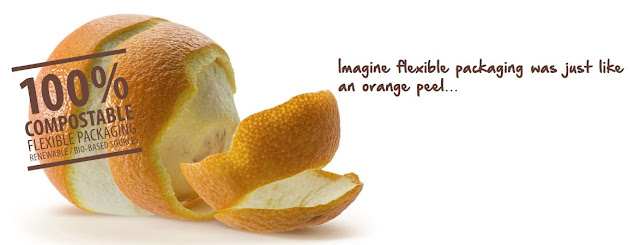Plastic is on the forefront of a passionate debate about our planet and how we use it’s resources. The UN is pushing change, and the EU is driving new thinking on single-use plastic (think forks, straws, etc) in an effort to tackle persistent ocean debris. This is sparking some excellent work around material solutions that are creative, surprising, and aspire to shift packaging more completely into the circular economy.
I admit to having felt a bit numb on this topic; a bit overwhelmed and perhaps even defeated. But the more I research it, the more I appreciate the possibility for innovation to solve for these environmental challenges. There are some cool developments on the horizon that bring me hope and inspire me to more deeply consider possibilities. I hope they do the same for you.
So, in this challenge there are two lanes of attention needed: 1) Get much better at recycling, and 2) Get better at using materials that degrade quickly and easily after their useful life is over (which is pretty short for most packaged goods).
I was encouraged by this list of companies who’ve signed up to make 100% of their plastic packaging ready for recycling or composting by 2025.
On the materials side, I was inspired by the many startups and research groups tackling this life cycle impact puzzle:
Good Start Packaging started out as a father’s mission to leave the planet better off for his children. Their food service packaging is comprised of compostable materials, like Poly Lactic Acid (PLA), a bio-plastic derived from U.S. grown corn, wheat straw, and Miscanthus, which is a non-invasive perennial crop that only needs to be planted once every 15-20 years and can grow in poor soil.
Ecologic is manufacturing bottles in a closed-loop process whereby the shells are made from paper and corrugated waste from customer distribution centers, and recycled plastic is used for the inner bottle.
Tomorrow Machine is a design studio focused on new technologies and intelligent materials. Their innovations include:
A self-cleaning plate and cup made entirely of cellulose; a super hydrophobic coating rejects dirt, like a lotus leaf, which means they don’t need water and chemicals to be kept clean.
An oil package made of caramelized sugar, coated with wax that you crack like an egg. The package then melts away when in contact with water.
A drink package made of agar-agar, seaweed and water. The package ages at the same rate as it’s contents; designed for juices and creams that have a short life span and require refrigeration.
A dry goods package made of biodegradable beeswax that you peel like a fruit.
Mobius’ mission is to create renewable materials from waste. They’ve formulated biodegradable plastics made with the lignin waste product from paper mills. When the material is done being used, it will breakdown into water, compost, and CO2.
Developing a new industry for milk that’s unfit for human consumption, Lactips’ thermoplastic pellets are derived from dairy protein. Their resin pellets create films that provide gas barrier and are water soluble, edible and biodegradable. The USDA is also active in this space. [Note: apparently the US produces a lot of milk, and milk consumption is declining, so they want to create something usable with the excess…]. Their casein-based film is 250 times more effective at blocking oxygen than traditional plastic film. They suggest it for single-serve soup or coffee; when dropped into hot water, the film dissolves completely and adds protein to the food. Other nutrients, like probiotics or vitamins, could be easily added as well.
Apeel forms an exceptionally thin “peel” of edible plant material on the surface of produce that naturally slows down water loss and oxidation, the factors that cause spoilage.
TIPA’s technology provides high-quality packaging that is fully compostable, including laminates and labels. The vision behind TIPA was to create advanced bio-materials, packaging that can truly be returned back to nature after it is used, just like an orange peel.
Skipping Rocks Lab is working on Ooho, a flexible package for liquids made from seaweed-extract. Ooho material degrades in a natural environment in 6 weeks and is also edible.
TemperPack's ClimaCell™ insulating material performs as well as EPS foam and is certified curbside recyclable. Made from jute and using material recycled from burlap bags, the packaging provides insulation to keep perishables chilled during shipping, and after use is compostable.
EnviroLife is the only 100% recycled fiber in North America that provides a zero-fluorescence solution and meets FDA requirements for direct food contact. Their unique manufacturing process eliminates optical brightening agents, resulting in a food-contact safe product with no need for a barrier or coating.
Naturally, understanding the full life cycle of a package system and the materials it’s made from is essential — and is our obligation as product developers. We can’t afford to jump to the first cool idea and end up in a carbon footprint corner.
As materials evolve and smart technologies scale and become more affordable, however, I’m inspired to believe in the new ways that personal products, foods and life-saving drugs could be delivered more seamlessly, fully participating in the circular economy.
 |
| https://shineadvisor.net |





You are providing good knowledge. It is really helpful and factual information for us and everyone to increase knowledge. Continue sharing your data. Thank you. Case packing systems
ReplyDeleteVery nice information, This information will always help everyone for gaining knowledge. So please always share your important information. I am very thankful to you for providing essential information. Read more info about Vertical form fill seal
ReplyDeleteWonderful post. your post is very well written and unique. Thank you for sharing this post here. controlled atmosphere packaging
ReplyDeletebj906 gabor boots australia,gabor skor,ecco outlet,chaco sandals,underarmourjapan,clarks schuhe ,sperry サンダル,muckboot sverige,pit viper brille ve393
ReplyDelete